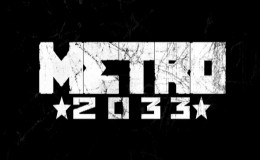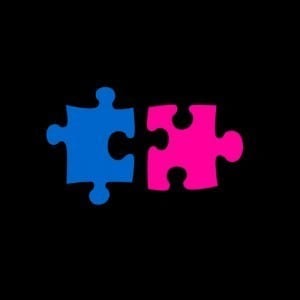
The games in 2010 that had promise but didn’t do enough with it
We’ve already taken a look back at the games of 2010 that completely surpassed our wildest expectations, so now it’s time to switch gears and focus on the titles that didn’t. Maybe they were massively over hyped, maybe they failed to live up to the legacy of their developer or maybe they just weren’t all that great to begin with. Regardless, here are ten games from this past year that could have been awesome, but, for one reason or another, simply weren’t.
Final Fantasy XIV
Whenever a MMORPG launches, there’s always a very, very good chance it’ll flop and eventually be eclipsed by the voluminous shadow cast by Blizzard’s “World of Warcraft.” Square Enix, backed by their renowned “Final Fantasy” brand name, was able to do just that with “Final Fantasy XI”, delivering a deep but enjoyable alternative to grinding Murlocs or raiding Naxxramas. Because of this, it really seemed like a no brainer that the sequel, “Final Fantasy XIV”, would be able to capitalize on its predecessor’s success and deliver a similar MMORPG experience, only bigger, better and prettier.
That’s what common sense would dictate, but coming from Japan, a country renowned for being the genesis of just about every conceivable eccentricity in the world, this probably seemed too normal for Square Enix. So instead of taking what worked and improving on it, “Final Fantasy XIV” methodically broke down “Final Fantasy XI” and removed all the conveniences that most gamers take for granted these days, like an in-game mail system or a crafting system that doesn’t rely exclusively on blind guesswork. The result was a bland, repetitive, frustrating and ultimately boring MMORPG that undoubtedly had early adopters fleeing back to the familiarity of “Final Fantasy XI” within days.
No one expects a MMORPG to sail smoothly right after leaving the port, but the trip becomes considerably less tolerable when it becomes glaringly evident that the ship has a million giant holes in it and is missing half the damn parts that keep it afloat to begin with.
Metro 2033
“Metro 2033” isn’t necessarily a horrible game, but it’s a pretty good example of a game that was heavily hyped prior to its launch and couldn’t deliver. Designed by some of the developers who split off from GSC Game World (the creators of the cult-classic “S.T.A.L.K.E.R” series) and boasting some incredibly detailed visuals, “Metro 2033” was shaping up to be the next big post-apocalyptic shooter that could rival the likes of “S.T.A.L.K.E.R” or “Fallout 3”. Better yet, it was a Xbox 360 exclusive (sort of).
In retrospect, comparing “Metro 2033” to “S.T.A.L.K.E.R: Call of Pripyat” or “Fallout: New Vegas” is pretty laughable. The game’s graphics do a great job of creating an immersive, atmospheric setting, but that’s one of the few things that 4A Games’ lackluster debut has going for it. The AI was woefully sub par, and worst of all, the shooting mechanics were poorly designed. When you weren’t firing at waves of generic enemies while riding on a mine cart like some kind of demented shooting gallery from hell, you were unloading bullets into enemies who wouldn’t flinch until they actually toppled over dead. There were a few cool ideas (like using ammo as currency) that helped distinguish “Metro 2033” from other games in the post-apocalyptic FPS genre, but they did little to disguise the fact that it’s a weak contender in a division stacked with top-tier talent.
APB
It was supposed to be “Grand Theft Auto: The MMO”, an open world where gamers could connect from all over the world to commit crimes, steal cars, customize their avatars with new clothes and weapons and battle it out with the police. It sounded like an amazing idea, particularly after we all saw how much fun “Grand Theft Auto IV’s” online multiplayer was. “APB” was even being helmed by Realtime Worlds, a game studio staffed by one of the original creators of “Grand Theft Auto.” What could possibly go wrong?
Well, everything it turns out. The driving and shooting mechanics were flawed, the game had almost no direction to help beginners figure out how to play, and the gameplay quickly deteriorated into mindless mayhem and carnage that wasn’t half as much fun as that description would normally suggest. Critics ripped the game to shreds, and, shortly after its release, it was announced that “APB” would eventually shut down its servers and relaunch in 2011 as a free-to-play game. With some major work, “APB” could actually be a fun game, especially if it’s free. As a pay-to-play MMO, though, “APB” will go down as yet another failure.
MAG
“MAG” is a bit of an oddity because I feel as though it was severely underrated by critics while still not living up to its potential of being the first genuine MMOFPS. There were certainly aspects of the game that were incredibly original and made “MAG” unlike any other shooter on the market, but at the end of the day, it really failed to deliver on the massive amounts of hype surrounding it. If Sony’s marketing was to be believed, “MAG” was going to be like “Battlefield 2”, only bigger and more awesome, but unfortunately the final product fell far from that ambitious goal.
The size and scale of an epic battle between two warring factions was never fully realized due to the battlefields being strategically partitioned to avoid rampant latency issues, and the game itself seemed outdated. The shooting mechanics felt sluggish and unresponsive, the graphics lacked the impressiveness of rival titles like “Battlefield: Bad Company 2”, and the amount of customization granted to players was disappointingly limited.
That’s not to say that “MAG” was a bad first-person shooter, but there simply were far too many other stellar alternatives available to warrant investing too much time with Zipper Interactive’s foray in the world of first-person shooters. If “MAG” actually was “Battlefield 2” with 256 players running around, driving vehicles and shooting each other simultaneously, it would probably have been the best FPS ever created. As it stands though, it’s little more than an ambitious project that showed loads of promise but bit off far more than it could chew.
Command and Conquer 4: Tiberian Twilight
With the exception of a few ill conceived and hastily developed expansion packs, “Command and Conquer” games are generally pretty awesome. “Red Alert 2” reminded gamers how evil those scheming communists really are (also how hot Kari Wurher used to be), “Tiberian Sun” ushered the franchise into the future (it also starred Michael Biehn and James Earl Jones), and even “Red Alert 3” and “Command and Conquer 3” managed to define themselves by laying on the cheese thick with J. Jonah Jameson, Lando Calrissian and Captain Sulu.
“Command and Conquer 4” screwed up in almost every way conceivable. The gameplay was too radical of a departure from the tried and true formula used by practically by every “Command and Conquer” game before it, and the live-action cut scenes were atrocious. Not so-bad-they’re-good mind you; they were pretty much too painful to sit through.
The multiplayer mode is still pretty decent if you can find a competent teammate to play with, but “Command and Conquer 4: Tiberian Twilight” is still a glaring step back in quality.
The Fight: Lights Out
You would think that any video game that featured Danny Trejo would automatically be kind of awesome, but “The Fight: Lights Out” for the PlayStation Move proves that even the most badass Hispanic angry man to ever grace the silver screen can’t magically imbue quality in whatever project he gets paid to be a front man for. Please don’t stab me in the throat with a machete, Mr. Trejo.
On paper, “The Fight: Lights Out” should have been a game that convinced people to run out and buy PlayStation Move. The PlayStation Eye would track your head movement and the PlayStation Move would allow the game to accurately replicate every hay maker and uppercut that you throw. On top of being a street fighting simulator, a friend could also hop in the action, meaning you could use “The Fight: Lights Out” to punch your buddy in the face without the risk of ruining your friendship.
Of course, this is all theoretical. In theory, if everything about “The Fight: Lights Out” worked the way it was supposed it, it would have been a darker, grittier and more badass version of boxing in “Wii Sports.” However, the harsh reality was that almost nothing in the game works as advertised. The motion tracking barely worked, and calibrating the PlayStation Eye was a humongous pain. It could have been a really fun game, but ultimately, there’s more fun to be had from playing the Gladiator Duel game in “Sports Champions” than “The Fight: Lights Out.”
Star Wars: The Force Unleashed II
Even though I haven’t trusted George Lucas to create a competent installment in the “Star Wars” franchise since “Episode One”, “Star Wars: The Force Unleashed II” still managed to disappoint. Oddly, though, it wasn’t the gameplay that irked me. Running around as Starkiller and hacking stormtroopers into pieces using lightsabers and force powers was pretty fun, albeit slightly repetitive and occasionally incredibly frustrating.
What really annoyed me about “Star Wars: The Force Unleashed” is LucasArts’ complete inability to write a storyline that doesn’t completely suck. “Star Wars: The Force Unleashed” was already pretty awful with its uninteresting romance subplots and shameless attempts to be relevant to the official “Star Wars” canon, but “Star Was: The Force Unleashed II” is even worst. Yoda and Boba Fett are thrown into the story as little more than pointless fan service (which, incidentally enough is a pretty apt description for the last three “Star Wars” movies), the romance between Starkiller and Juno Eclipse is even more boring than before, and the plot goes absolutely nowhere. This might not bother casual “Star Wars” fans, but for the hardcore “Star Wars” nerd, “Star Wars: The Force Unleashed II” is just more evidence that Lucas Arts needs to let BioWare (or someone with actual talent) write their plots from now on.
Xbox 360 Kinect
Granted, it might be a tad premature to declare the Xbox 360 Kinect a disappointment. After all, it’s selling like hotcakes and it’s only been on store shelves for a few months. However, if initial impressions are any indication of what to expect from Microsoft’s motion-tracking peripheral, there are very few reasons to be overly optimistic about its future. The launch titles consisted of uninspired compilations of mini-games, completely unplayable fighting simulators, and a host of other generic shovel ware titles that only managed to demonstrate the Kinect’s complete inability to register your motions as accurately as advertised. Of all the games available when the Kinect launched, the only one that’s actually worth picking up is “Dance Central.” The rest are, at best, varying shades of mediocrity.
Kincet definitely has the opportunity to rebound and prove its worth, but it looks doubtful. With the exception of the upcoming “Forza Motorsport 4”, Microsoft seems entirely committed to using the Kinect as a vehicle to attract casual gamers. While there’s nothing wrong with casual games, the marginalization of the Xbox 360’s hardcore crowd is somewhat insulting. It certainly doesn’t help matters that the casual games Microsoft has procured for the Kinect thus far have been (for the most part) far from impressive.
Front Mission Evolved
“Front Mission Evolved” is exactly the kind of game you would expect when a tactical role-playing franchise gets turned into a third-person, mech shooter and its developer is the studio that most recently made “G.I. Joe: The Rise of the Cobra.” In other words, it wasn’t very good. At best an “Armored Core” knockoff with a ridiculous storyline, “Front Mission Evolved” simply wasn’t that much fun to play. Building your own mech and outfitting it with weapons has its appeal, but the repetitive and unpolished nature of Square Enix’s mech shooter severely lessened its appeal. Even the prospect of going online and killing your buddies with a humongous, machine-gun wielding robot wasn’t enough to warrant investing the time and money in “Front Mission Evolved.”
The reason why it was such a disappointment, though, was because “Front Mission Evolved” bears the name of a truly awesome RPG series that Square Enix has been neglecting for years. Fans have been yearning for a dose of turn-based, mech-killing fun on current gen consoles, and the fact that Square Enix wasted the time making a generic, robot-shooter instead of a true installment in the franchise is as baffling as it is frustrating.
Mafia II
Don’t get me wrong –”Mafia II” is a fun game. With its gripping storyline full of betrayal and murder and its action-packed gunfights, “Mafia II” was an enjoyable experience. However, as fun as “Mafia II” was, it was far from perfect. The missions were far too linear, the gameplay was riddled with inconsistencies and flaws that caused irritation, the game was far too short and the ending was shockingly abrupt. While this might be acceptable for any other “Grand Theft Auto” clone, “Mafia II” fails to live up to the prestigious reputation of its predecessor, “Mafia: The City of Lost Heaven.”
The original “Mafia” was more than just a “Grand Theft Auto” clone. It defined itself as a PC classic with its adherence to mobster flicks and early Americana. The fact that the gameplay took the best of “Grand Theft Auto” while still making the art of driving, shooting and killing feel fresh and unique certainly didn’t hurt anything either. “The Godfather” tried to replicate what made “Mafia” such a humongous success, but even with the film’s licensing it failed. Unfortunately, “Mafia II” doesn’t fare much better. It’s a good game, but when you’re the successor to one of the best PC games ever made, good just doesn’t cut it.















